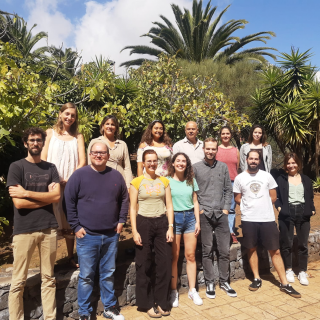Bibcode
Sarzi, M.; Iodice, E.; Coccato, L.; Corsini, E. M.; de Zeeuw, P. T.; Falcón-Barroso, J.; Gadotti, D. A.; Lyubenova, M.; McDermid, R. M.; van de Ven, G.; Fahrion, K.; Pizzella, A.; Zhu, L.
Referencia bibliográfica
Astronomy and Astrophysics, Volume 616, id.A121, 23 pp.
Fecha de publicación:
8
2018
Revista
Número de citas
88
Número de citas referidas
80
Descripción
The Fornax cluster provides a uniquely compact laboratory in which to
study the detailed history of early-type galaxies and the role played by
the environment in driving their evolution and their transformation from
late-type galaxies. Using the superb capabilities of the Multi Unit
Spectroscopic Explorer on the Very Large Telescope, high-quality
integral-field spectroscopic data were obtained for the inner regions of
all the bright (mB ≤ 15) galaxies within the virial radius
of Fornax. The stellar haloes of early-type galaxies are also covered
out to about four effective radii. State-of-the-art stellar dynamical
and population modelling allows characterising the disc components of
fast-rotating early-type galaxies, constraining radial variations in the
stellar initial-mass functions and measuring the stellar age,
metallicity, and α-element abundance of stellar haloes in cluster
galaxies. This paper describes the sample selection, observations, and
overall goals of the survey, and provides initial results based on the
spectroscopic data, including the detailed characterisation of stellar
kinematics and populations to large radii; decomposition of galaxy
components directly via their orbital structure; the ability to identify
globular clusters and planetary nebulae, and derivation of high-quality
emission-line diagnostics in the presence of complex ionised gas.
Proyectos relacionados

Huellas de la Formación de las Galaxias: Poblaciones estelares, Dinámica y Morfología
Bienvenida a la página web del g rupo de investigación Traces of Galaxy Formation. Somos un grupo de investigación amplio, diverso y muy activo cuyo objetivo principal es entender la formación de galaxias en el Universo de una manera lo más completa posible. Con el estudio detellado de las poblaciones estelares como bandera, estamos constantemente
Anna
Ferré Mateu